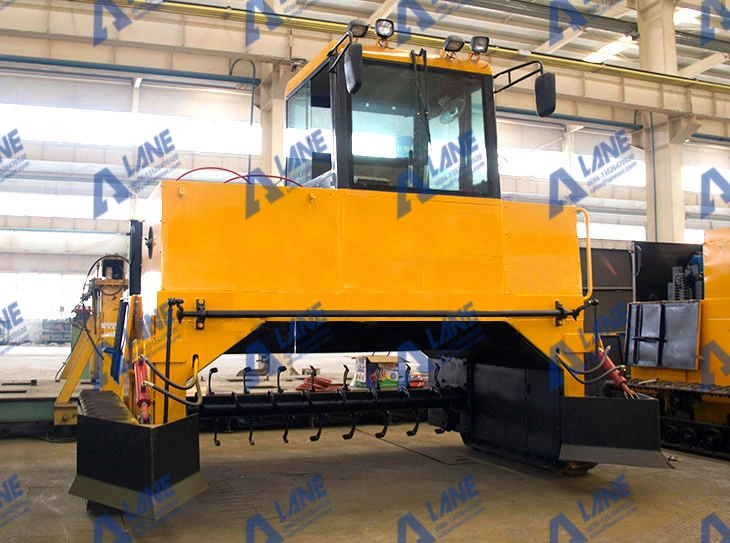Soil is the foundation of agriculture, and its health directly influences crop yield, quality, and resilience. Over time, intensive farming practices, chemical fertilizer overuse, and soil erosion have led to nutrient depletion and declining fertility in many regions. One of the most effective ways to restore balance is through the use of organic fertilizer for soil improvement.
Unlike synthetic fertilizers that mainly supply nutrients in a quick-release form, organic fertilizer for soil improvement enhances soil structure, boosts microbial activity, and gradually releases nutrients. This makes it a long-term investment in sustainable farming and a critical component of modern agriculture.

Why Organic Fertilizer for Soil Improvement Matters
Restores Soil Structure: Organic matter improves soil aggregation, aeration, and water retention, preventing compaction and erosion.
Nutrient Recycling: Organic fertilizers recycle natural materials such as crop residues, livestock manure, and compost, returning valuable nutrients to the soil.
Boosts Microbial Diversity: Beneficial microorganisms thrive on organic matter, supporting nutrient cycling and plant health.
Reduces Chemical Dependency: Farmers can gradually reduce their reliance on synthetic fertilizers, lowering production costs and environmental impact.
Supports Long-Term Fertility: Continuous application of organic fertilizer for soil improvement creates fertile land that can sustain high productivity for generations.
Types of Organic Fertilizer for Soil Improvement
Organic fertilizers come in many forms, each with unique benefits:
Compost-Based Fertilizer – Produced by composting crop residues, kitchen waste, or animal manure using machines like a crawler type compost turner.
Liquid Organic Fertilizer – Derived from processes such as fish waste fermentation or soybean meal hydrolysis, ideal for drip irrigation and foliar application.
Manure-Based Fertilizer – Cow, pig, and poultry manure processed through composting lines to create pathogen-free, nutrient-rich fertilizer.
Bio-Organic Fertilizer – Enriched with beneficial microbes to enhance soil microbial activity and disease resistance.
Granular Organic Fertilizer – Produced with equipment like a stirring pin granulator or rotary drum granulator, offering easy storage and application.
Production Workflow of Organic Fertilizer for Soil Improvement
A typical organic fertilizer production line follows these steps:
1.Raw Material Collection
Agricultural residues (straw, husks), manure, and other organics are gathered. An inclined dewatering machine helps reduce moisture where necessary.
2.Composting
The material undergoes aerobic fermentation, with temperature and oxygen levels maintained using a crawler type compost turner.

3.Crushing and Mixing
After composting, a crusher breaks down clumps, and the material is blended in a horizontal mixer with additives like trace minerals or beneficial microbes.
4.Granulation
Processed material enters a stirring pin granulator or disc granulator, forming uniform fertilizer granules.
5.Drying and Cooling
A rotary drum dryer lowers moisture, followed by a rotary cooler to stabilize the granules.
6.Screening and Polishing
A rotary screener separates qualified products, while a polishing machine improves appearance.
7.Packaging
An automatic packaging machine bags the finished organic fertilizer for soil improvement, ready for distribution.

Advantages for Farmers
Higher Yields Over Time – Improved soil fertility leads to steady yield increases.
Healthier Crops – Nutrients are balanced and released gradually, preventing nutrient stress.
Lower Input Costs – Farmers save money by recycling local agricultural waste into fertilizer.
Market Access – Crops grown with organic fertilizers qualify for organic certification in many regions, opening premium markets.
Sustainability – Helps reduce greenhouse gas emissions compared to synthetic fertilizer production.
Case Example: India’s Smallholder Farmers
In Punjab, India, smallholder farmers adopted organic fertilizer for soil improvement after years of relying on chemical fertilizers that degraded their soil. Using locally produced compost-based fertilizers, they restored soil fertility and improved water retention. Yields of wheat and rice increased by 12%, and fertilizer costs fell by 20%. Farmers also reported fewer pest problems due to healthier soil biology.
Case Example: Organic Vineyards in Italy
Italian vineyards focused on high-quality grapes shifted toward organic fertilizer for soil improvement. By using composted grape pomace and manure-based fertilizers, they enriched soil organic matter and microbial diversity. Over three seasons, grapevine resilience improved, and the vineyards secured organic certification, which boosted export sales.
Integration with Modern Farming Practices
Organic fertilizer for soil improvement works best when combined with modern agricultural technologies:
Drip Irrigation Systems – Liquid organic fertilizers can be injected directly into irrigation pipelines.
Precision Agriculture – Sensors and data analytics guide the precise application of organic fertilizers, reducing waste.
Crop Rotation – Enhances soil fertility by diversifying nutrient input and reducing disease cycles.
Circular Agriculture Models – Integrates livestock, crops, and waste recycling into one closed system.
Future Outlook
As global food systems face pressure to feed a growing population sustainably, the role of organic fertilizer for soil improvement will expand. Policy incentives, consumer demand for organic food, and advances in composting and granulation equipment will drive adoption. Future systems may also integrate automation, IoT-based monitoring, and renewable energy to make production more efficient.
Another important trend is the integration of organic fertilizers with regenerative agriculture practices. Farmers are increasingly combining organic fertilizer for soil improvement with cover cropping, reduced tillage, and biodiversity enhancement. This holistic approach not only restores soil fertility but also helps capture carbon, making farming part of the climate solution.
Global trade will also influence the future. With international markets rewarding organic and eco-certified products, demand for fertilizers that support certification will rise. This creates opportunities for both smallholder farmers and large agribusinesses to participate in premium markets.
In short, organic fertilizer for soil improvement is not only an agronomic necessity but also a strategic direction for the entire agricultural sector, shaping how food is produced and how soils are managed in the decades to come.
The use of organic fertilizer for soil improvement is more than a farming technique—it is a pathway toward healthier soils, resilient crops, and sustainable food systems. By recycling waste, enhancing soil structure, and reducing reliance on chemicals, organic fertilizers deliver long-term benefits that go beyond individual harvests.
From small farms in India to high-value vineyards in Italy, real-world examples show how this approach supports productivity, sustainability, and profitability. Looking forward, organic fertilizer for soil improvement will continue to play a central role in rebuilding soil fertility and ensuring food security for generations to come.
For more details, please feel free to contact us.
Henan Lane Heavy Industry Machinery Technology Co., Ltd.
Email: sales@lanesvc.com
Contact number: +86 13526470520
Whatsapp: +86 13526470520